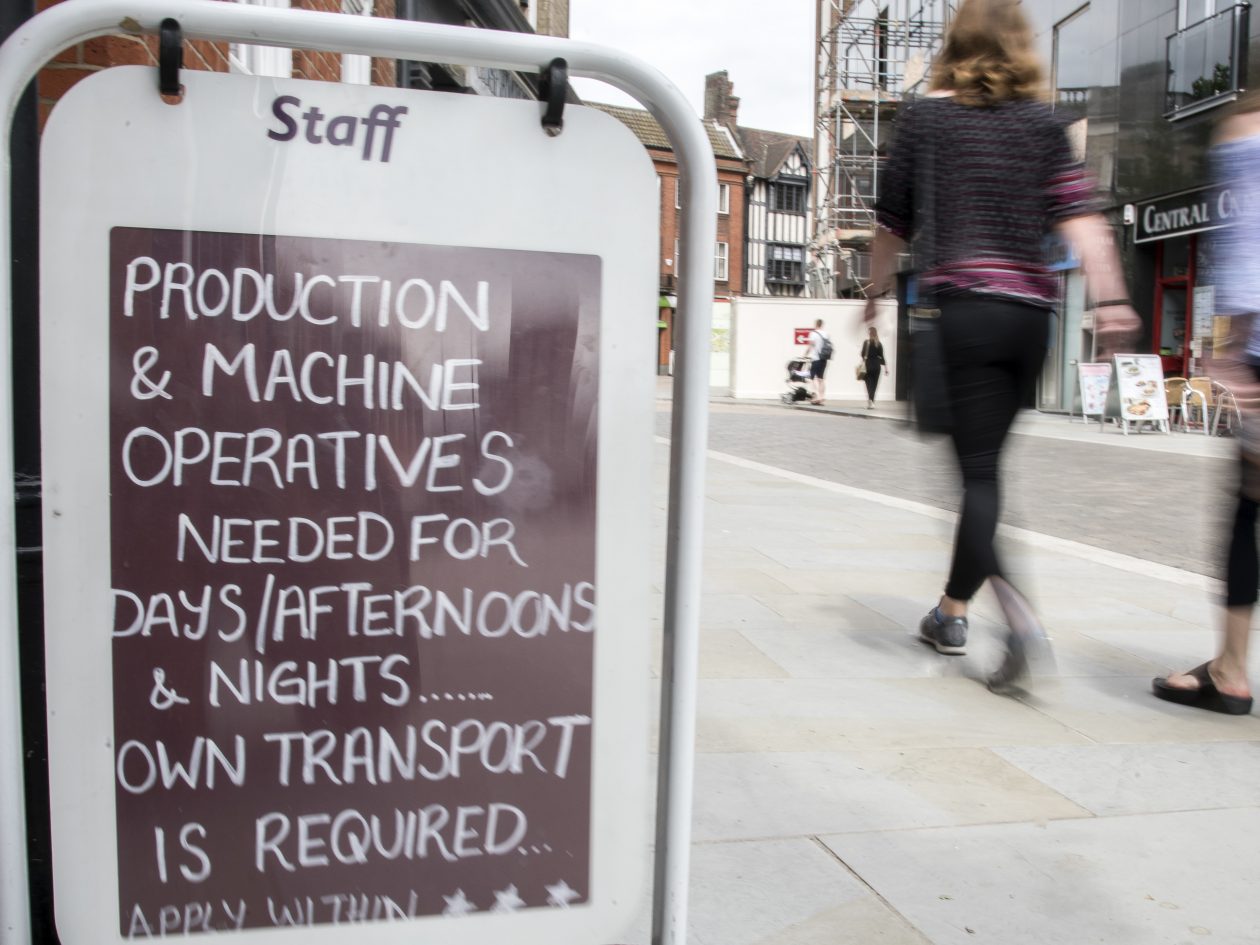Women, part-time workers, previously unemployed and sectors such as food and accommodation services, and textile manufacturing, have lowest chances of moving off minimum wage and onto jobs paying more than two thirds of the median hourly wage.
The Low Pay Commission has published a new report by Dr Silvia Avram and Professor Susan Harkness on the impact of the minimum wage. The study looks at the wage progression of minimum wage job holders between 2009 and 2016 to see whether the substantial increases in the minimum wage during this period affected rates of progression, and at what sort of jobs and what sort of people were moving onto better paid work after a spell working on the minimum wage. Seven per cent of UK workers were on minimum wage in 2017 so this research will be important to policy makers looking to understand how and when people move onto better paid work.
Key findings
• around half of minimum wage workers succeed in finding better paid employment within a year
• of these, four fifths remain in low paid employment (employment paying less than two thirds of the median hourly rate)
• there is no indication that chances to progress have been affected by the recent increases in the minimum wage
• the chance of moving onto better paid work varies between people and jobs. More educated individuals, those working in the public sector or in large firms are more likely to transition to ‘high’ pay jobs. Women, individuals with a history of unemployment, part-time workers, and workers in accommodation and food services and food, beverages and textile manufacturing have lower chances of moving to ‘high’ paid employment.
Between 2008 and 2017, the adult minimum wage rate in the UK increased significantly relative to median hourly pay. In 2017, it was 54% of median hourly pay compared to 48% in 2008. During this period, the proportion of workers covered by the minimum wage also increased from 4% in 2008 to 7% in 2017.
The researchers used the rich data from Understanding Society, UK Longitudinal Household Survey (UKHLS) to look at transitions out of minimum wage employment, from 2009 to 2016.
They looked at transitions of working age individuals who were entitled to the adult pay rate throughout the period, men aged 25-64 and women aged 25-59, to three possible destinations:
• employment paid above the minimum but less than two thirds of median hourly pay (low paid employment),
• employment paid above two thirds of median hourly pay (‘high’ paid employment),
• non-employment.
Dr Silvia Avram, Research Fellow at the Institute for Social and Economic Research, said:
“As the minimum wage increased in a context of stagnant pay, concerns have been raised that the resulting squeeze on pay differentials may harm the chances of minimum wage workers to move into better paid employment. We found no evidence to support this hypothesis. Instead, chances to progress to ‘high’ paid employment depend on education, previous unemployment history and characteristics of the current job such as sector, industry and firm size. Women are more likely to be trapped in low paid work, as are part-time workers.
“Our findings are important for setting future increases in the National Living Wage. Minimum wage hikes have been an important policy tool for addressing very low pay since the introduction of the National Minimum Wage in 1999. Previous studies have found no effects on employment. Our study now shows that there are no discernible negative effects in terms of wage progression either. “
Low Pay Commissioner Professor Sarah Brown said:
“The research we commission is vital for our understanding of the effects of the minimum wage rates we recommend. Over the last 20 years our commissioned research has helped us to successfully fulfil our remit of raising pay for the lowest-paid without causing unemployment. We are very grateful to the passion and commitment of academics from the UK and beyond who have put time and effort into what is a vital area of research, with a real impact on people’s lives.”
Every year the Low Pay Commission commissions research projects to help evaluate the effects of the minimum wage rates we have recommended. Published today are two final reports and two interim reports.
This research and others from the most recent portfolio informed the Low Pay Commission’s 2018 Report. The completed projects are from the National Institute of Economic and Social Research and London School of Economics. NIESR covered the impact of the National Minimum Wage and National Living Wage on employment, hours and wages, and LSE their effect on and automation and offshoring.
The two ongoing projects are from the Institute for Social and Economic Research and Institute for Employment Studies concern progression out of minimum wage jobs and employment and hours, respectively.
Links to the Report and summaries.
